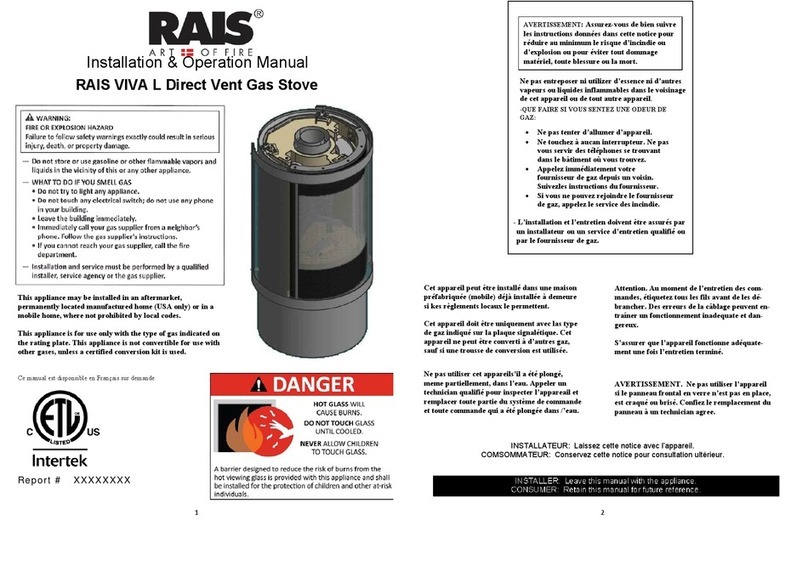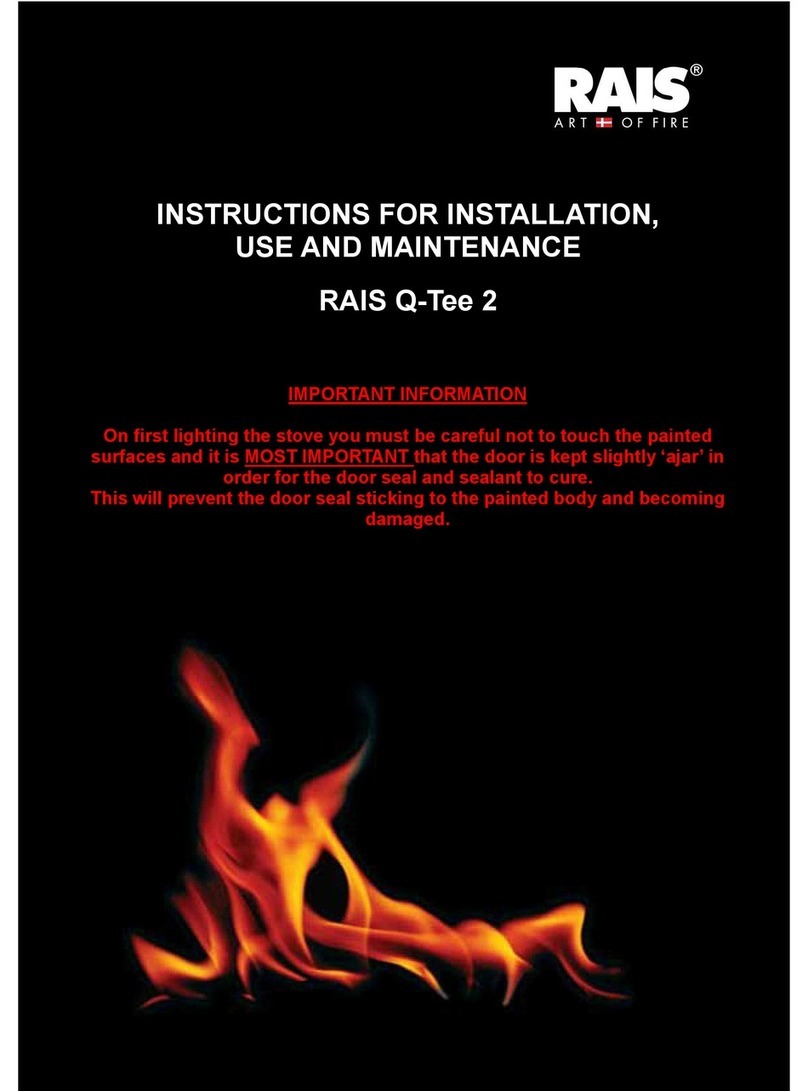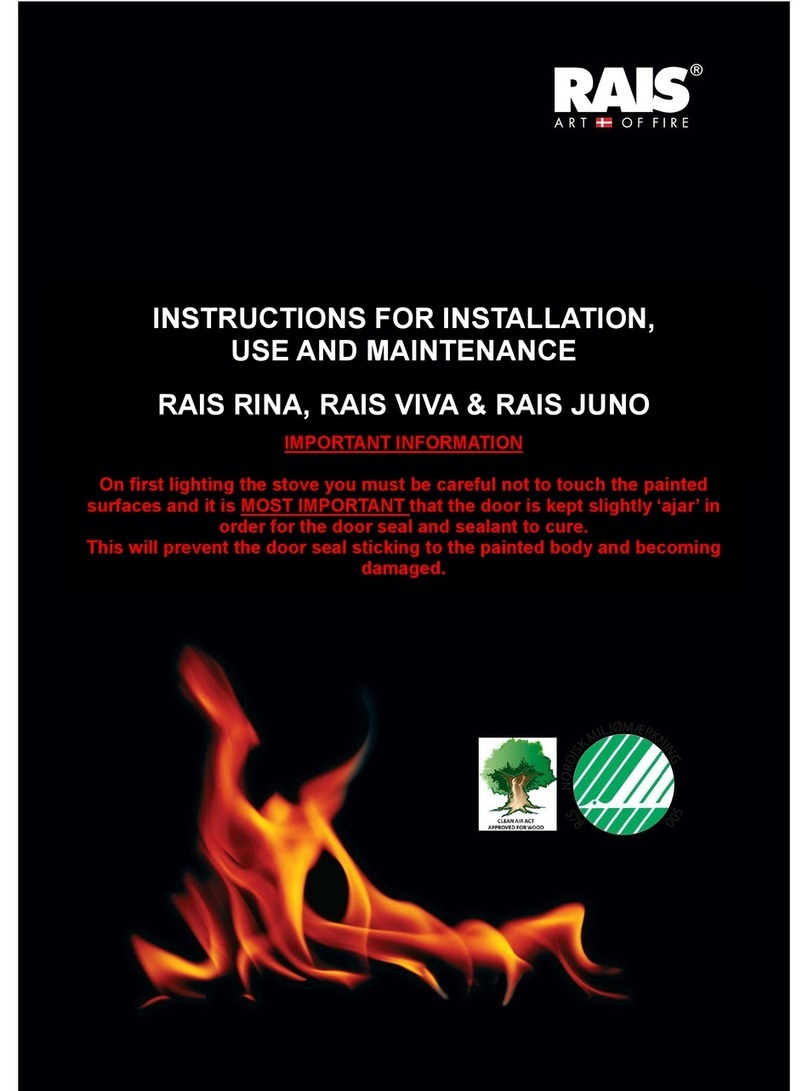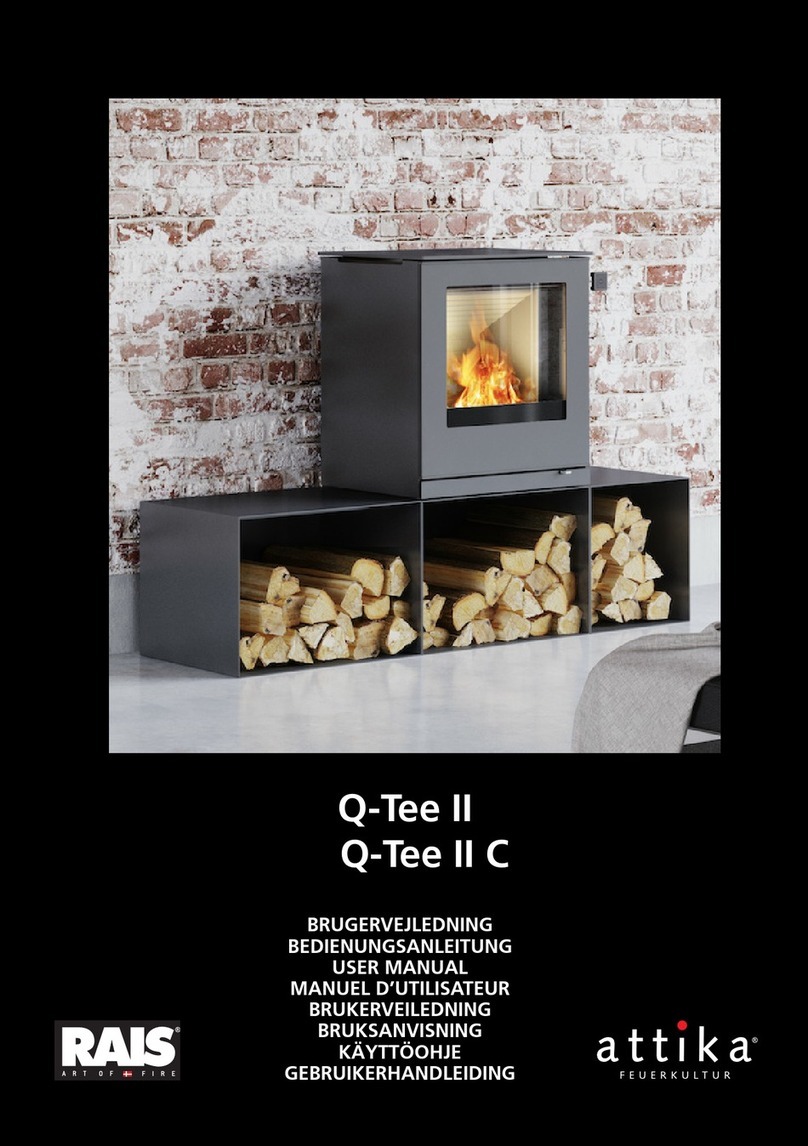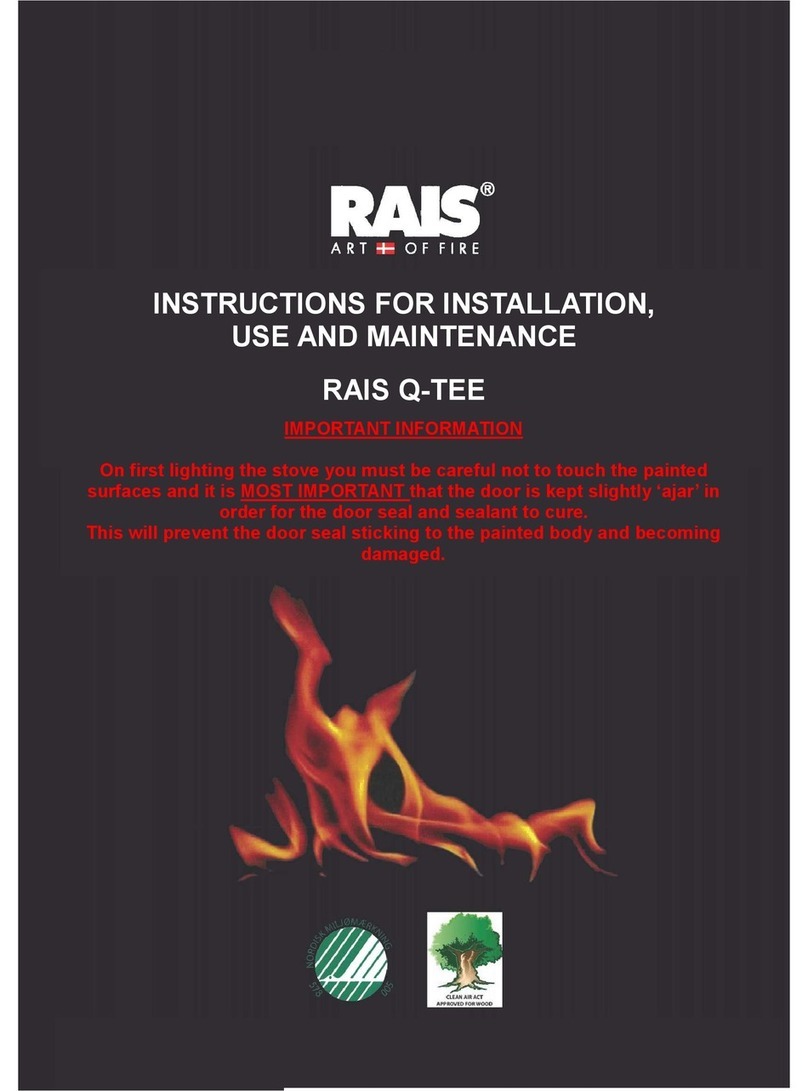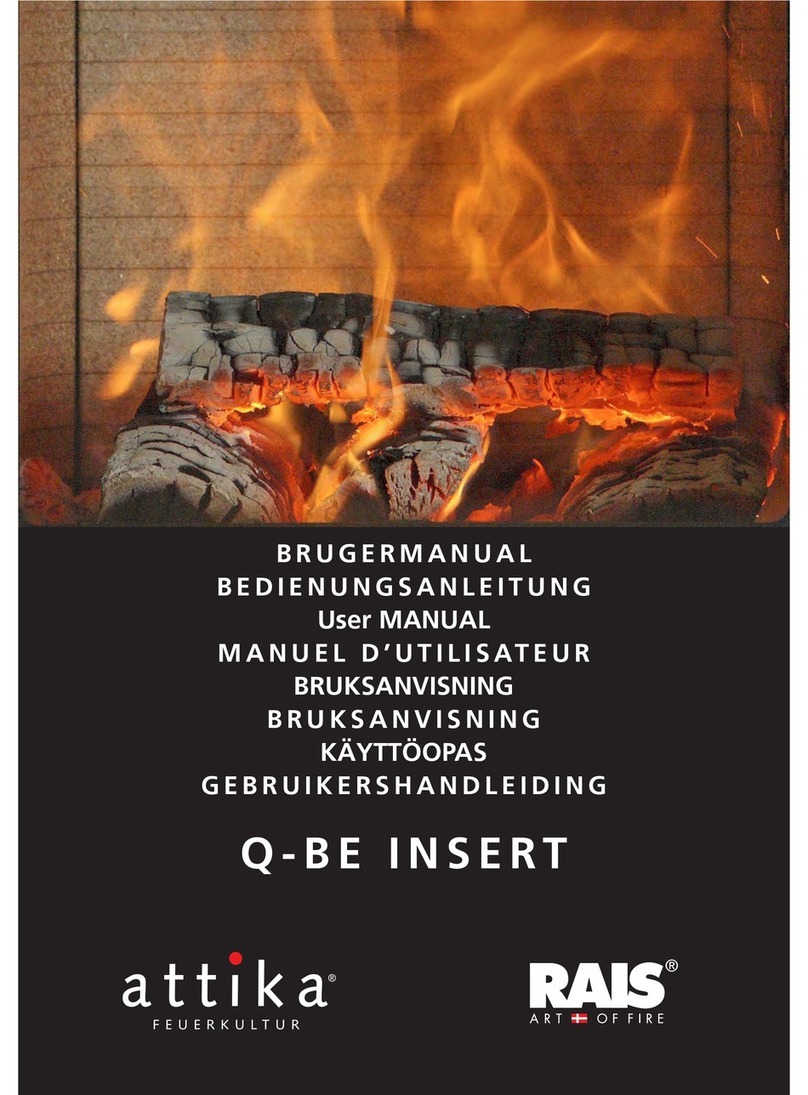Manual for Rais Rina, Rais Viva & Rais Juno including Classic models
8
Rev 7a June 2015
smokeless fuels or exem t a liances for use in smoke control areas in England. In Scotland and Wales
this ower rests with Ministers in the devolved administrations for those countries. Se arate legislation, the
Clean Air (Northern Ireland) Order 1981, a lies in Northern Ireland. Therefore it is a requirement that fuels
burnt or obtained for use in smoke control areas have been "authorised" in Regulations and that a liances
used to burn solid fuel in those areas (other than "authorised" fuels) have been exem ted by an Order
made and signed by the Secretary of State or Minister in the devolved administrations.
Rais Rina 90, Rina 90 Classic, Rina 90 S apst ne, Rina 90 Classic S apst ne, Viva 98, Viva 98G,
Viva 98 Classic, Viva 98G Classic, Viva 120, Viva 120G, Viva 120 Classic, Viva 120G Classic, Jun ,
Jun G, Jun Classic and Jun G Classic.
These have been recommended as suitable for use in smoke control areas when burning wood. The air
controls are factory set to allow a certain amount of combustion air when the controls are fully closed, the
controls must not be modified in any way.
Further information on requirements of the Clean Air Act can be found at: htt ://smokecontrol.defra.gov.uk/
Your local authority is res onsible for im lementing the Clean Air Act 1993 including designation and
su ervision of smoke control areas and you can contact them for details of Clean Air Act requirements.
Recommended size of fuel is shown in the Fuel section.
Special N tes f r use in a Sm ke C ntr l Area:
Refuelling n t a l w fire bed:
If there is insufficient burning material in the firebed to light a new fuel charge, excessive smoke emission
can occur. Refuelling must be carried out onto a sufficient quantity of glowing embers and ash that the new
fuel charge will ignite in a reasonable eriod. If there are too few embers in the fire bed, add suitable
kindling to revent excessive smoke
Fuel verl ading:
The maximum amount of fuel s ecified in this manual should not be exceeded, overloading can cause
excess smoke.
Operati n with d r left pen:
O eration with the door o en can cause excess smoke. The a liance must not be o erated with the
a liance door left o en exce t as directed in the instructions.
Dampers left pen:
O eration with the air controls or dam ers o en can cause excess smoke. The a liance must not be
o erated with air controls or dam ers left o en exce t as directed in the instructions.
Peri ds f Pr l nged N n-Use
If the stove is to be left unused for a rolonged eriod of time then it should be given a thorough clean to
remove ash and unburned fuel residues. To enable a good flow of air through the a liance to reduce
condensation and subsequent damage, leave the air controls fully o en.
Extract r fan
There must not be an extractor fan fitted in the same room as the stove as this can cause the stove to emit
smoke and fumes into the room.
Aer s l sprays
Do not use an aerosol s ray on or near the stove when it is alight.
Use f perating t ls
Always use the o erating tools rovided when handling arts likely to be hot when the stove is in use.
Chimney Fires
If the chimney is thoroughly and regularly swe t, chimney fires should not occur. However, if a chimney fire
does occur turn off the stove immediately and isolate the mains electricity su ly (if a licable), and tightly
close the doors of the stove. This should cause the chimney fire to go out. If the chimney fire does not go
out when the above action is taken then the fire brigade should be called immediately. Do not relight the
stove until the chimney and flueways have been cleaned and examined by a rofessional.
Permanent air vent
The stove requires a ermanent and adequate air su ly in order for it to o erate safely and efficiently.
In accordance with current Building Regulations the installer may have fitted a ermanent air su ly vent
into the room in which the stove is installed to rovide combustion air. This air vent should not under any
circumstances be shut off or sealed.

